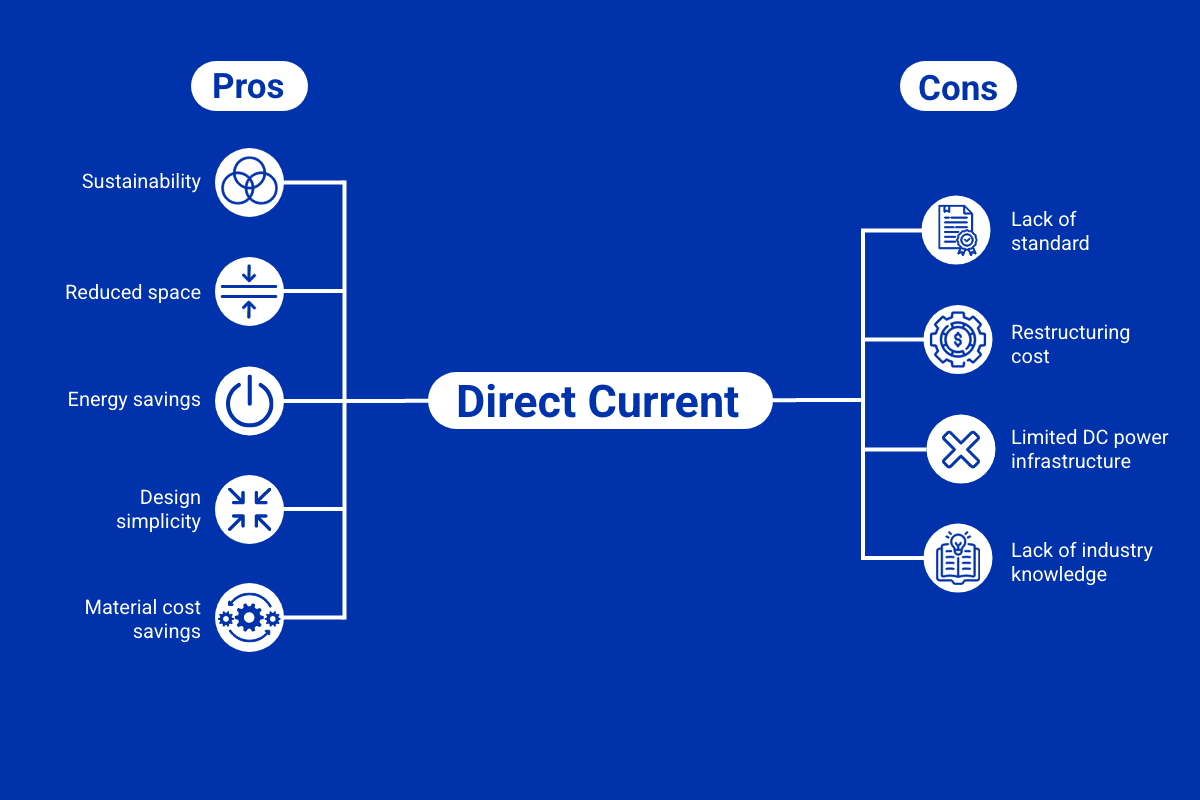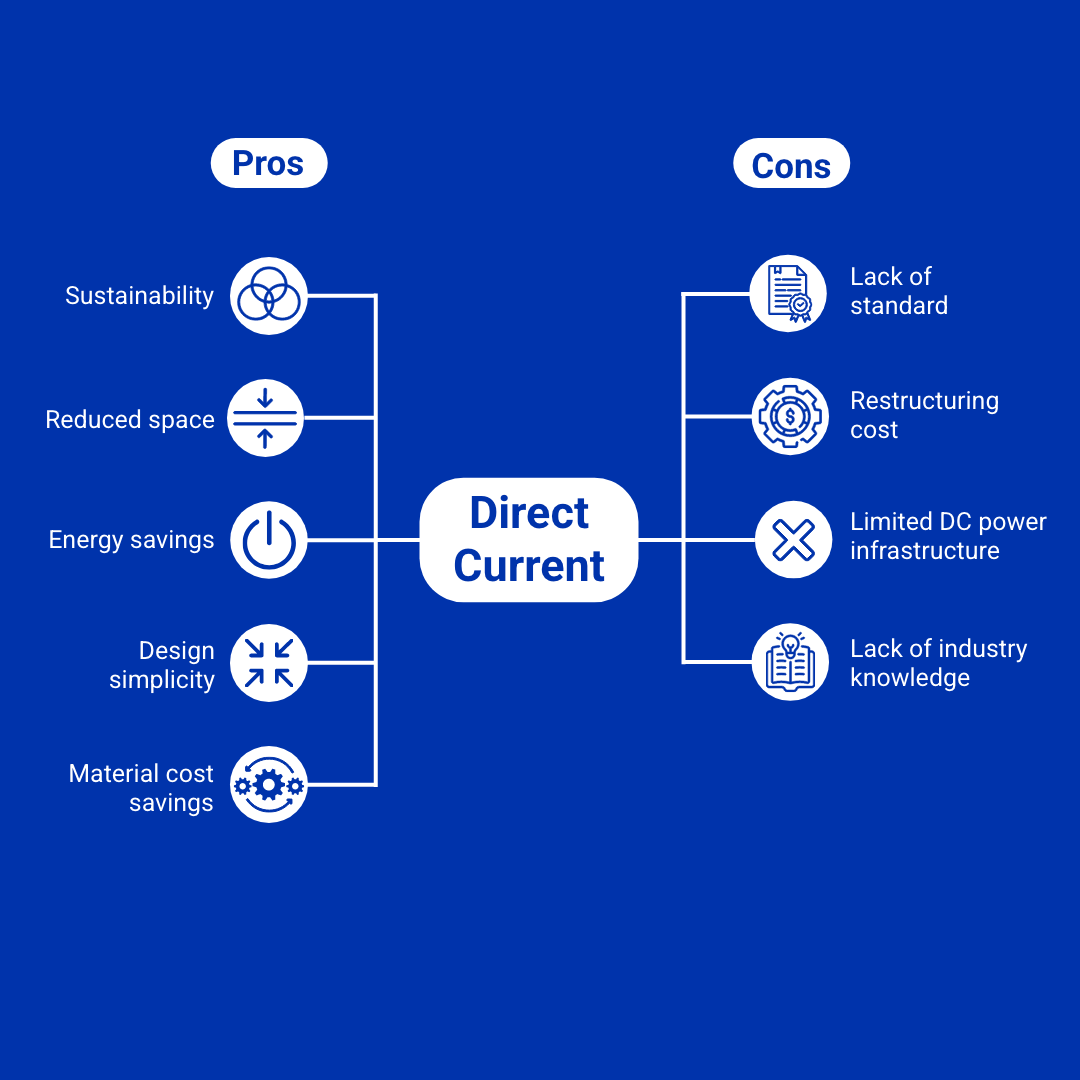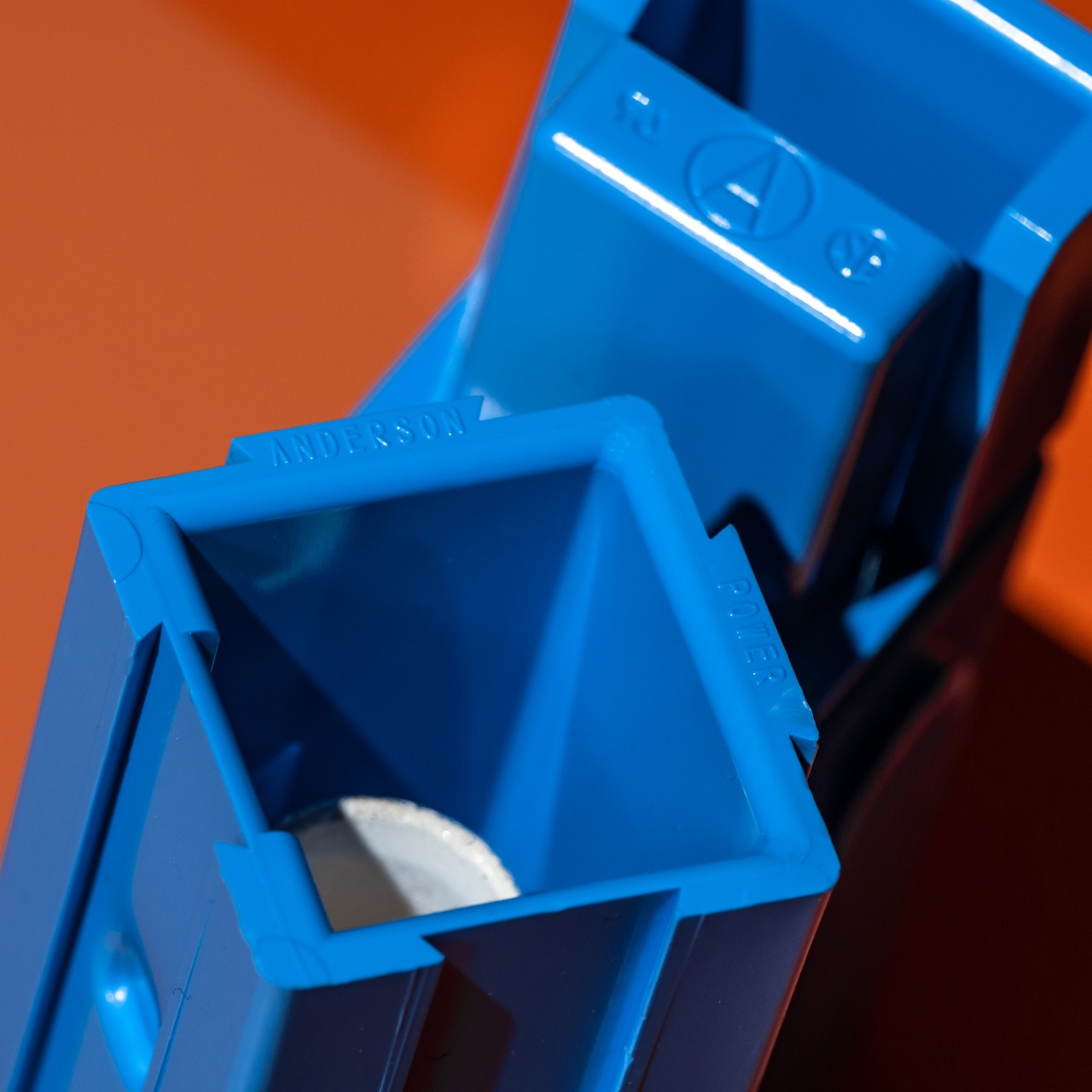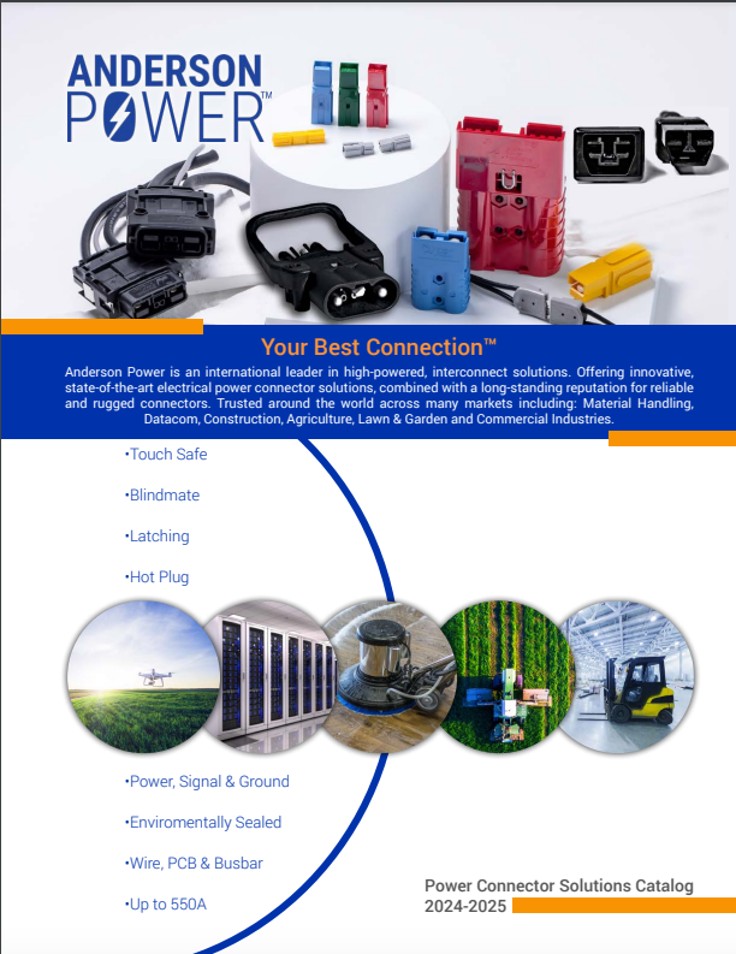AC vs. DC in Today’s Datacenters
Today, DC power is making a bit of a comeback. Computers, phones, TVs, and LEDs, along with sustainable energy sources like solar and wind, all run on DC power. Advances in technology, including the adoption of high voltage direct current (HVDC) lines, can transport DC current longer distances with less energy loss.
Datacenters today still generally rely on AC to power their systems. However, the backup batteries that sustain the datacenter in the event of a power interruption run on DC power. This situation requires a complex series of conversions within the datacenter:
First, power enters the datacenter as AC power and goes through a rectifier that changes it to DC.
Then, power runs through the Uninterruptible Power Supply (the backup batteries) as DC power.
Finally, power goes through an inverter that converts it back to AC to feed the rest of the datacenter system.
These numerous conversions are inefficient and waste energy, which has sparked some interest in developing fully DC-powered datacenters. In a DC datacenter, only one conversion is needed: taking the AC power provided by the electrical grid and changing it to DC. The amount of energy conservation would be significant. Studies have shown that in AC datacenters with an isolation transformer, adopting a DC system would save approximately 6.1% in energy costs alone.
According to FS, a company involved in the fiber optic networking industry, additional benefits of adopting DC-powered datacenters include:
Material Cost Savings: DC systems use less copper than AC systems and do not require the use of rectifiers and transformers.
Reduced Space: With less conversions needed, DC systems require less space to operate, leaving more room within the datacenter for server racks or cooling equipment.
Sustainability: As datacenters strive to reduce their carbon footprint and energy consumption, DC systems make it much easier to integrate renewable energy sources like solar or fuel cells.
However, the adoption of DC power in datacenters is not without challenges, including:
Lack of Standards: DC power systems do not have as many established industry standards as AC, including for electrical voltages, arc flash, and grounding. This requires each system to be engineered individually, increasing costs.
Lack of Industry Knowledge: Datacenter owners, operators, and contractors are not as familiar with DC power.
Restructuring Cost: Swapping existing datacenter infrastructure from AC to DC power is costly.
Other DC Building Resources: Other building systems, such as air conditioning and fire protection systems, would ideally need to be DC to run in DC-powered datacenters. However, there are few DC options on the market.















